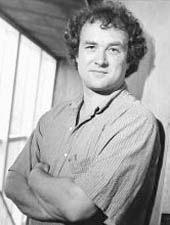Fu, P., Ramchandran, R., Shaaya, M., Huang, L., Ebenezer, D.L., Jiang, Y., Komarova, Y., Vogel, S.M., Malik, A.B., Minshall, R.D., Du, G., Tonks, N. K., Natarajan, V. (April 2020) Phospholipase D2 Restores Endothelial Barrier Function by Promoting PTPN14-mediated VE-cadherin Dephosphorylation. Journal of Biological Chemistry, 295 (22). pp. 7669-7685. ISSN 0021-9258
Abstract
Increased permeability of vascular lung tissues is a hallmark of acute lung injury and is often caused by edemagenic insults resulting in inflammation. Vascular endothelial (VE)-cadherin undergoes internalization in response to inflammatory stimuli and is recycled at cell adhesion junctions during endothelial barrier re-establishment. Here, we hypothesized that phospholipase D (PLD)-generated phosphatidic acid (PA) signaling regulates VE-cadherin recycling and promotes endothelial barrier recovery by dephosphorylating VE-cadherin. Genetic deletion of PLD2 impaired recovery from PAR-1-activating peptide (PAR-1-AP)-induced lung vascular permeability and potentiated inflammation in vivo. In human lung microvascular endothelial cells (HLMVECs), inhibition or deletion of PLD2, but not of PLD1, delayed endothelial barrier recovery after thrombin stimulation. Thrombin stimulation of HLMVECs increased co-localization of PLD2-generated PA and VE-cadherin at cell-cell adhesion junctions. Inhibition of PLD2 activity resulted in prolonged phosphorylation of Tyr-658 in VE-cadherin during the recovery phase 3h post-thrombin challenge. Immunoprecipitation experiments revealed that after HLMVECs are thrombin stimulated, PLD2, VE-cadherin and protein tyrosine phosphatase non-receptor type 14 (PTPN14), a PLD2-dependent protein tyrosine phosphatase, strongly associate with each other. PTPN14 depletion delayed VE-cadherin dephosphorylation, reannealing of adherens junctions, and barrier function recovery. PLD2 inhibition attenuated PTPN14 activity and reversed PTPN14-dependent VE-cadherin dephosphorylation after thrombin stimulation. Our findings indicate that PLD2 promotes PTPN14-mediated dephosphorylation of VE-Cadherin and that redistribution of VE-cadherin at adherens junctions is essential for recovery of endothelial barrier function after an edemagenic insult.
Actions (login required)
 |
Administrator's edit/view item |
